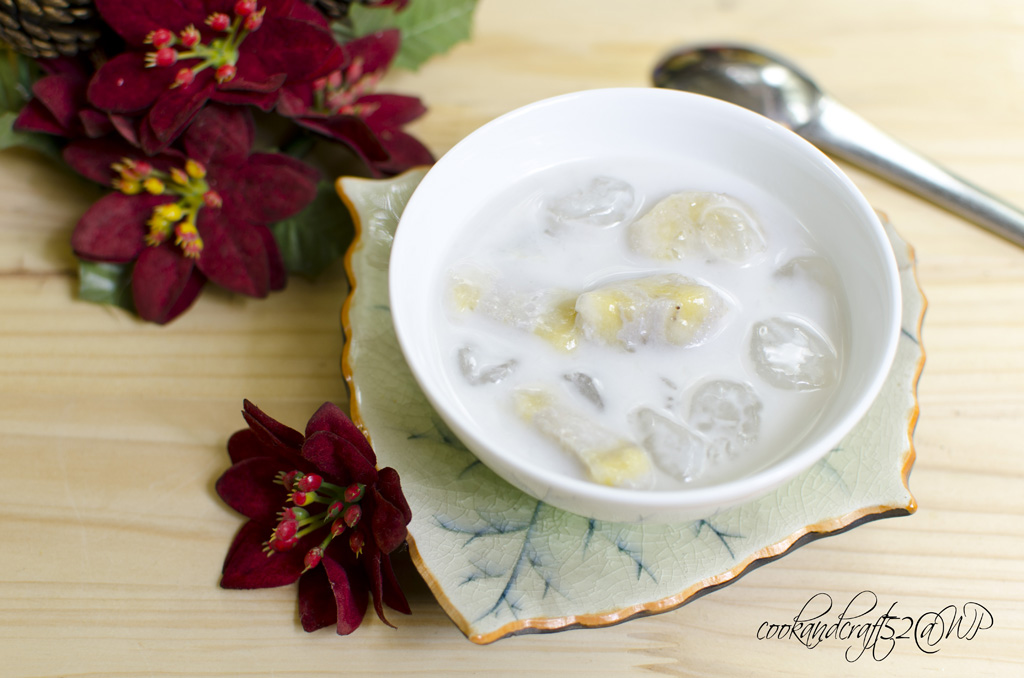Growing up in a strict Vietnamese household, eating anything outside of the Asian food genre when at home was looked down upon. When you are at home, you have to eat the food that is presented together with the family or you don’t eat at all. As I ventured out into the world, every time someone asked me what my favorite dessert was, I never knew what to say. I wondered how to answer this question for many years, and came to the conclusion that chè is my favorite dessert. It’s my favorite because that is what I grew up with and that is what I know.
Vietnamese desserts defy the stereotype of desserts being cakes, cupcakes and pies by implementing unique ingredients to fulfill your sweet tooth. Chè is the holy grail of desserts in the Vietnamese culture. This is usually a type of pudding, drink, or even soup and contains ingredients you never would have thought of to put in a dessert.
If you are an adventurous foodie, then I highly recommend you give these desserts a try when you get the chance.
Chè Chuối
Personally, I am not a huge fan of banana flavored things in American desserts. But, in this Vietnamese dessert, I don’t mind the banana aspect at all. The bananas used in this dessert are not normal bananas. They are smaller fatter bananas that are sweeter than normal and are called a chuối xiêm (and this is what they look like).
Growing up there were always two types of bananas in my house, the regular kind and this smaller sweeter kind. This dessert is made with coconut milk and sago pearls, which are similar to tapioca, but bigger and more clear. The banana is then cooked together with this and topped off with chopped peanuts. Served warm usually, this is a great dessert for the winter months.
Chè Thái

This is my favorite summertime dessert. It contains an abundant of tropical fruits and flavorful jellies and these jellies have a similar consistency as a classic Jell-O that are then topped off with either half and half or coconut cream. It is typically served over ice or after it has been refrigerated. On a hot summer day, I find myself craving this sweet creamy treat.
Chè Trôi Nước
Up next is my all time favorite ever since I was a child. I would beg my dad to make this for me—I was convinced my dad’s was the best and I refused to eat anyone else’s.
This dessert is usually served warm unlike the previous dessert and involves glutinous rice dumplings with mung beans that have been mashed inside of the big ones. The dumplings themselves don’t have a tremendous amount of flavor but the other parts really adhere to the rice flour to create a decadent dessert.
These dumplings sit in a sweet ginger soup with sesame seeds to top it off along with coconut cream (not pictured here). The combination of the chewiness of the dumplings with the sweetness of the sauce just pulls all of the right taste buds in my mouth.
Chè Ba Màu

Also known as the Three (Ba) Colored (Mau) Dessert. This dessert looks just as colorful as Chè Thài, but it contains different ingredients that stay layered to give you a variety of flavors and textures.
The bottom layer is usually made up of sweetened red kidney beans. People typically see beans as savory, but these are candied beans, thus becoming sugarier and perfect for a dessert.
The next layer is made up of softened, then mashed and sweetened yellow mung beans. The final layer is made with any kind of green jelly. Rough, sweet, chewy, and smooth are all words that can describe this savory turned sweet dessert.
Chè Bắp

When someone thinks of corn, the only dessert-related thing that comes to mind is corn bread, which really isn’t a dessert to begin with. In the Vietnamese culture though, we have chè bắp. This is made with glutinous rice that is cooked down to almost a pudding and corn. Sugar is added to sweeten this dessert and similar to the other desserts, this is topped off with optional coconut cream. This can be served cold or warm—whatever you are in the mood for. Personally, I enjoy it cold.
Now that I am older and away at college, I definitely miss having all of these desserts whenever I please. Ranging from hot to cold, and colorful to not as photogenic, chè is a staple in Vietnamese cuisine that is certainly overlooked in the foodie world.
When looking online, there is barely any information regarding the art of Vietnamese desserts (especially written in English). If you ever get the chance to try any of these, I truly highly recommend you try them. I honestly prefer these over a cake or pie any day.




